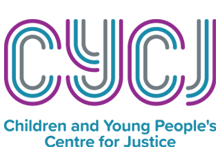Is there ever a good reason to disclose the identity of a young person responsible for a serious crime against another child? In the aftermath of the death of Katie Rough, CYCJ Associate David Orr considers why choosing the best course of action when confronted by such emotive scenarios is never straightforward.
The circumstances surrounding the tragic death of seven year old Katie Rough in York on January 9, 2017 are slowly beginning to drip into the public domain. In what was a horrific incident that unquestionably got the New Year off to a terrible start in the world of youth crime and justice, all the facts may never be known but there appears to be relative consistency across different media outlets about the basic details. Found by members of the public lying in a field near her home with significant lacerations to her neck and chest, her injuries proved fatal. In a relatively short space of time a 15 year old girl was arrested and later in the week remanded in custody charged with murder and possession of an offensive weapon. The alleged perpetrator “cannot be identified for legal reasons” but several reports have made reference to her having had “mental health” difficulties.
The devastation felt by Katie’s parents must be all but unbearable. What a senseless, dreadful loss of life.
Meanwhile on the other side of this tragedy, or so it seems, is another child. Should the young female remanded in custody ultimately be tried and found guilty of the offence, she will inevitably spend a lengthy period of time in custody. Whether diminished responsibility on account of mental ill health becomes part of her defence remains to be seen. Inevitably the violent death of a child, seemingly at the hands of another child, evokes memories of the death of James Bulger in Liverpool in 1993. Furthermore it brings to mind the fate of the two young men charged with his death – Robert Thompson and Jon Venables. Who can forget the manner in which they were treated in the aftermath of the toddler’s death? A quick Google search brings you rapidly to the images of both boys – the ‘mugshots’ – which were displayed and broadcast around the world in the aftermath of the offence. My over-riding feeling on viewing those images? They look so young.
It is incidents such as the death of Katie Rough and Jamie Bulger that cast in sharp focus the recommendation outlined in Charlie Taylor’s Review of the Youth Justice System in England and Wales that, “Further consideration should be given by the Ministry of Justice to whether the law on youth reporting restrictions should be amended to provide for them to apply automatically…to children involved in criminal investigations and for the lifetime of young defendants”. Back when it was released in 2007 and long before he became Spiderman, I remember watching Andrew Garfield’s breakout performance in Boy A, an adaptation of a novel by Jonathan Trigell. The main protagonist is a young man who, having committed a terrible offence as a child returns to the community as a 24 year old with a new identity. The film tracks his struggle to fit in, having to “live a lie” and feeling he cannot share his “whole self” with anyone, even to the girlfriend to whom he attaches a close and intimate bond. While the explicit nature of the offence he committed in childhood is not revealed, the viewer is left to surmise from images and flashbacks that it involved causing serious harm to another child in a fashion similar to the harm caused to James Bulger by the two children who attacked him.
As is so often the case in the youth justice world, knowing what is the best course of action when confronted by such emotive scenarios is never straightforward. Without wishing to reveal any Boy A spoilers (albeit a decade after its release!), even when a child commits a very serious offence; spends an extended period of time in custody; and, is released to the community with a new identity; this by no means constitutes getting off lightly. In many respects it is merely the end of one sentence and the beginning of another. However as those parents, friends and family members of children killed by children would rightly highlight, the challenges faced by perpetrators seeking to reintegrate into society after commission of a homicide pale in comparison with the loss felt by those left behind following the violent death of a loved one.
In relating these issues to youth crime and justice in Scotland, I only really have one closing thought or observation. I struggle to see how it can ever be in the public interest for the identity of a young person under the age of 18 responsible for a serious offence(s) to be disclosed in the media if Scotland is a country with a serious and genuine commitment to children’s rights. However, until we work out and agree when a child ceases to be a child and becomes an adult (a picture which is extremely muddled in legislation with 16 or 18 being the threshold depending on where you look), it will be difficult for sensitive questions – such as when it is in the public interest for information about the perpetrators of serious crime to be shared – to be broached in any kind of coherent fashion by policy and decision-makers.
About our blogger
David Orr is Senior Practitioner at Edinburgh Young People’s Service where he is involved in frontline social work practice with children and young people involved in offending behaviour, both in the Children’s Hearings System and the Criminal Justice System. Read more.

Leave a Reply
You must be logged in to post a comment.